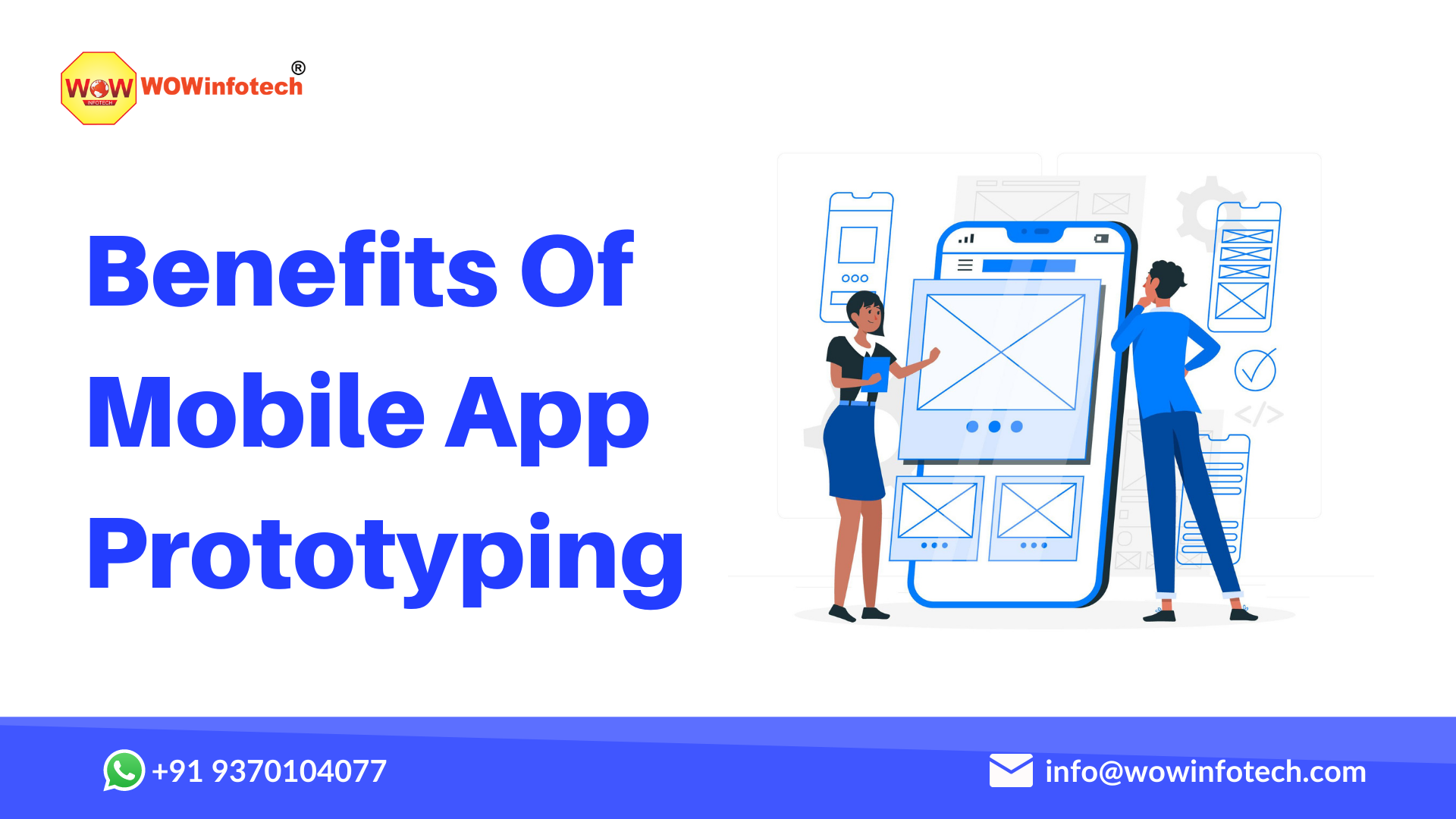Prototyping is an essential part of the mobile app development process, providing numerous benefits that ultimately lead to a successful and well-received product. In this blog, we will explore what prototyping is, its different types, and the benefits that come with it, including improved design, enhanced user experience and increased speed and efficiency in the development process.
What is Prototyping?
Prototyping refers to the creation of a preliminary model or sample of a mobile app, used to test its functionality and design before moving forward with the full-scale development. Prototyping provides a visual representation of the app, allowing developers and stakeholders to interact with it, identify potential issues, and make necessary changes.
Types of Prototyping
There are several types of prototyping, each with its own unique benefits and use cases. The three most common types of prototyping are:
Low-fidelity prototyping - This type of prototyping involves creating basic wireframes or sketches to represent the app's structure and layout. It is a quick and inexpensive way to test initial ideas and concepts and is often used in the early stages of the design process.
Medium-fidelity prototyping - This type of prototyping involves creating more detailed wireframes and mockups, incorporating some of the app's visual design elements and interaction. This type of prototyping is often used to test specific features and functionality before moving forward with the full development process.
High-fidelity prototyping - This type of prototyping involves creating a highly detailed and interactive version of the app that closely resembles the final product. High-fidelity prototypes are used to test the app's user experience, design, and overall functionality, and can be used as a demonstration tool to secure funding or show stakeholders what the final product will look like.
Benefits of Prototyping
Improved Design
Prototyping allows designers to test and refine the app's design, user experience, and overall look and feel. It provides an opportunity to make changes early on in the development process, when they are easier and less expensive to implement. Prototyping also helps to eliminate design inconsistencies and improve overall user satisfaction.
Enhanced User Experience
Prototyping enables developers to test and refine the app's user experience, making it easier and more intuitive for users to navigate. By testing the app with real users, developers can identify areas that need improvement and make changes before the app is launched. This helps to ensure that the final product is well-received and meets user needs.
Increased Speed and Efficiency in the Development Process
Prototyping can save time and money in the development process, as it allows developers to identify and resolve potential issues early on. By testing and refining the app in the prototyping phase, developers can avoid costly and time-consuming changes later on in the development process. This ultimately speeds up the time-to-market and reduces the risk of project delays.
Better Communication and Collaboration
Prototyping helps to improve communication and collaboration among stakeholders, including designers, developers, and business stakeholders. By having a visual representation of the app, all parties can understand the app's features and functionality, allowing for more efficient and effective decision-making.
Securing Funding and Investment
High-fidelity prototypes can be used as a demonstration tool to secure funding and investment for the app. By providing a visual representation of the app, stakeholders and investors can get a clear idea of what the final product will look like and how it will function. This can help to secure the necessary funding and investment needed to bring the app to market.
Prototyping is an essential part of the mobile app development process that provides numerous benefits for designers, developers, and stakeholders. By creating a preliminary model or sample of the app, developers can test its functionality, design, and overall user experience. This allows for early identification and resolution of potential issues, saving time and money in the long run.
In addition to improved design and enhanced user experience, prototyping can also increase the speed and efficiency of the development process and improve communication and collaboration among stakeholders. High-fidelity prototypes can also be used as a demonstration tool to secure funding and investment for the app.
It's important to note that prototyping is not a one-time process, but rather an ongoing process that evolves and changes as the app development progresses. Prototyping allows for constant iteration and refinement, leading to a final product that is well-designed, user-friendly, and successful in the marketplace.
In conclusion, if you're planning to develop a mobile app, it's important to include prototyping as a crucial part of your development process. By taking advantage of the benefits of prototyping, you'll be able to create a better and more successful product, saving time, money, and resources in the process.
-

Krishna Handge
WOWinfotech
Jun 24,2023
